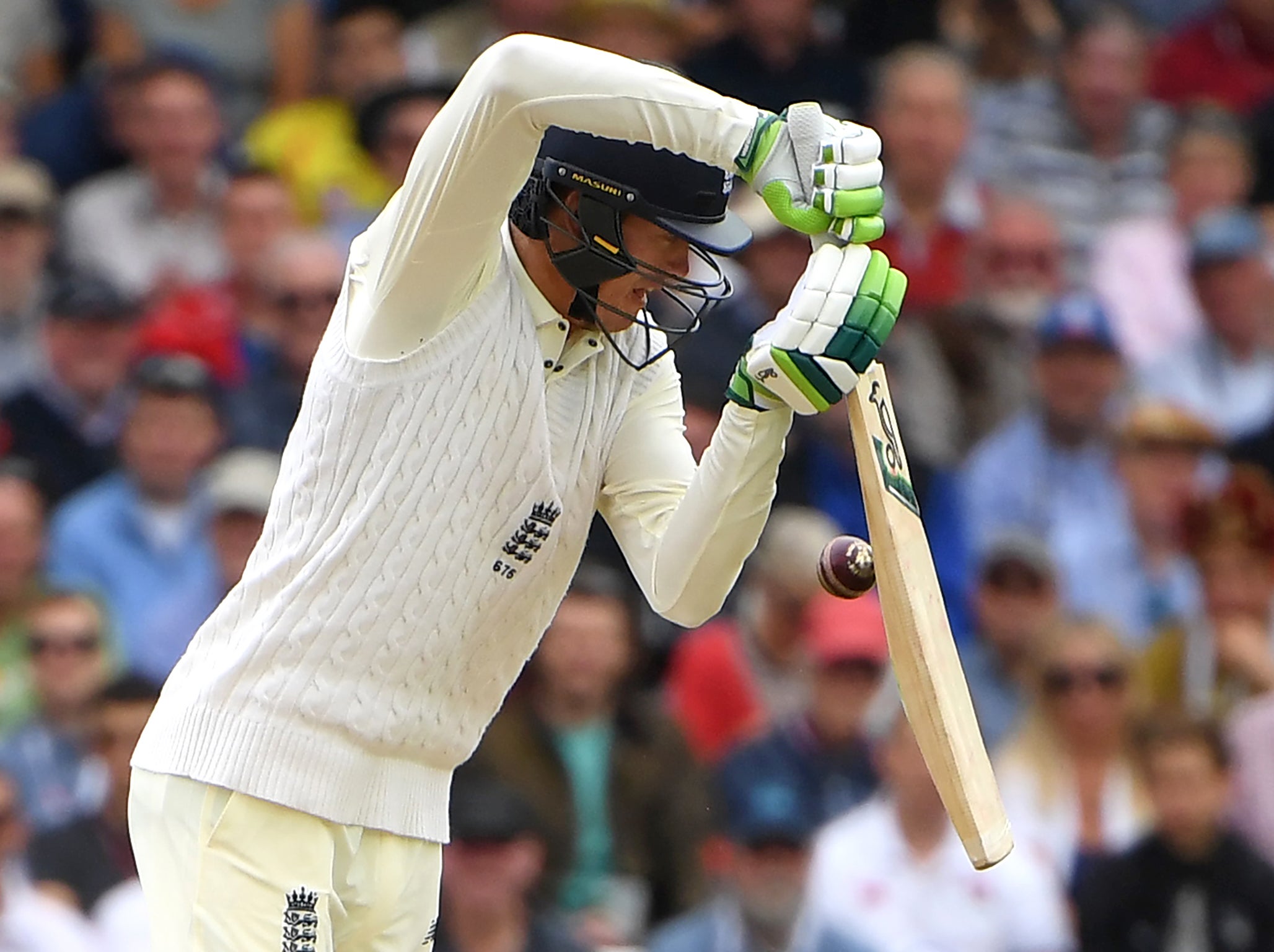England go down swinging, Keaton Jennings has surely run out of time and Hardik Pandya is a true Test all-rounder
Four things we learned on day two at Trent Bridge, as England single-handedly saved Test cricket by collapsing against India inside a single session

1) Keaton Jennings, surely, is done
It might seem harsh to pick on one of only three England batsmen to reach 20. But even a modest Jennings knock is often fraught with danger and ridden luck. His first ball was a leading edge that only just evaded the bowler; his second was an edge through the slips for four; his 11th was a big LBW shout. According to CricViz, Jennings edges 10 per cent of the balls he faces in Test cricket.
The former England football manager Glenn Hoddle once famously said of Andy Cole that you needed to give him five chances to score one. With Jennings, it’s the opposite: he gives you so many chances that sooner or later, the law of averages dictates that you’re eventually going to take one. England will be loath to shed yet another opener in the middle of the series. But Jennings may end up leaving them with no choice.
2) The blossoming of Hardik Pandya
For a guy who claims not to read his press, you wonder whether Hardik Pandya did take a sneaky peek at what Michael Holding was saying about him earlier in the week. Holding questioned Pandya’s status as a Test all-rounder, saying he offered neither the requisite weight of runs nor the requisite penetration with the ball. “I don’t think he does a lot with the ball,” Holding said. “He is not consistent. He does not have the control that puts batsmen under pressure constantly.”
If he did, it would explain a lot. Pandya ran in and took his maiden five-wicket haul in Test cricket with a textbook display of control and pressure-building. It was the fastest he had ever bowled in a Test, and the most he had ever swung it. He adjusted his length to the conditions - bowling more than 1m fuller than he had at Edgbaston and Lord’s, according to CricViz - but still varying his length and angle enough to keep the batsman guessing.
“I feel that with my bowling style it’s important to move it,” he said afterwards, “otherwise batsmen get used to it. I don’t swing both ways that much. It makes it difficult for them to know exactly where I’m going.” Fortunately for Pandya, this display at least settled this last point. He has the best strike rate of any bowler in this series so far, and he’s not going anywhere for a while.
3) England go down swinging
Even after England’s worst collapse since the last one, Jos Buttler was speaking in the close-of-play press conference about the need to shift the momentum when wickets are falling by counter-attacking with the bat. That’s fine if you’re as gifted a batsman as Buttler is, but with the ball swinging around and India’s tails up, England could arguably have benefited from a little more counter-defence.
In their respective first innings, India left the ball almost twice as often as England - 28 per cent to 16 per cent, without even taking into account the fact that India batted longer and thus had more time to get settled and play themselves in. England’s stubborn insistence on playing their shots was a direct echo of their performance here against South Africa a year ago, when they swung merrily at South Africa’s seamers, collapsed in 51 overs, and lost by 340 runs.
4) India’s folding tail
In recent years, few teams in the world have plundered lower-order runs as efficiently as India. Since the start of 2015, they lead the world in terms of half-centuries from the lower order, with the likes of Pandya, Ravi Ashwin and Ravi Jadeja often propelling them to formidable totals against tiring attacks.
This series, however, England seem to have the measure of them. India’s last five wickets fell for 22 runs, the lowest since Nathan Lyon spun them out in Bangalore 18 months ago. And so far this series, India’s last five wicket have averaged just 16.9, which is their worst since their tour of Australia in 2011-12. The good news for India is that they probably won’t be needing theirs again this Test match.
Subscribe to Independent Premium to bookmark this article
Want to bookmark your favourite articles and stories to read or reference later? Start your Independent Premium subscription today.

Join our commenting forum
Join thought-provoking conversations, follow other Independent readers and see their replies